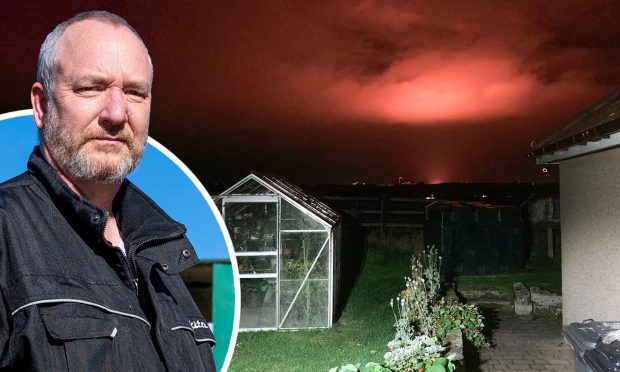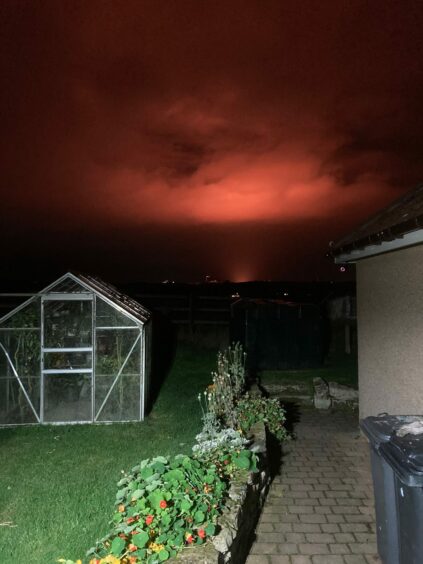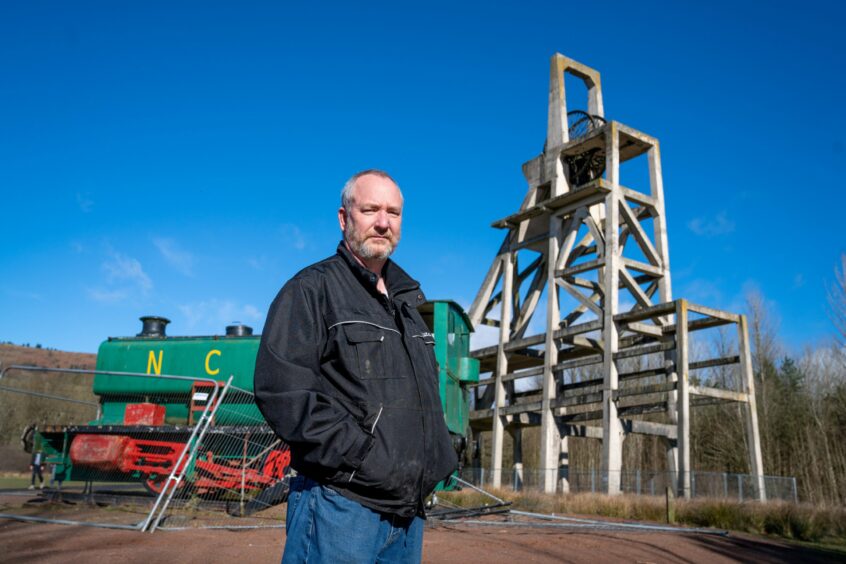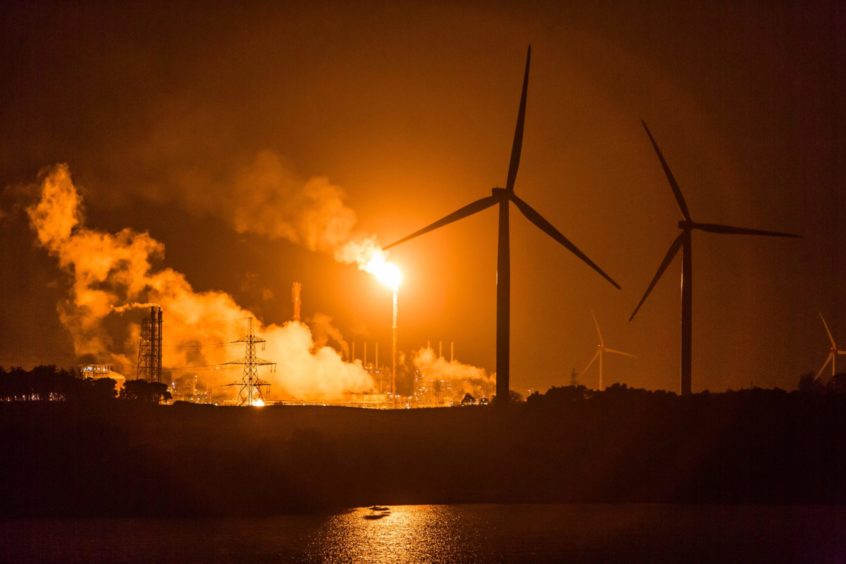A recent investigation linked gas flaring to cancer cases in Iraq, so where does this leave people living around Mossmorran in Fife?
Flaring at the Cowdenbeath chemical plant creates what one resident described as the “Mordor effect”.
Mordor is an area characterised by pollution and industrialisation in the books, films and TV programmes based on the works of fantasy writer JRR Tolkien.
The orange glow from the gas flames can be seen for miles.
It happens when ExxonMobil’s Fife Ethylene Plant (FEP) has to shut down, either because of routine maintenance or an unexpected incident.
The gas processed at the plant cannot be stopped so it has to be burned off.
Investigation revealed cancer link
In a recent documentary, BBC News Arabic said it had seen a confidential report linking air pollution to a 20% rise in cancer between 2015 and 2018 in Basra, Iraq.
The investigation also revealed that under Iraqi law people’s homes should not be within a six-mile radius of flaring sites.
But the nearest resident to Mossmorran lives less than a mile away.
Ballingry resident Tom Kinnaird lives around five miles, as the crow flies, from the plant.
He told us: “It’s not fair on the people living here, most of whom have had absolutely no say on the location of these plants but have to endure the consequences of living next to them.”
The most recent flaring involved flames at ground level rather than from the elevated flare stack.
But Tom said “the ‘Mordor’ effect on the night sky was every bit as alarming”.
What happens at Mossmorran?
The St Fergus terminal near Peterhead processes natural gas to separate out the methane for household gas boilers and cookers.
The left-overs from that process go via an underground pipeline to Shell’s Fife NGL Plant at Mossmorran.
The NGL Plant separates out ethane, propane, gasoline and butane. The last three heat off grid houses, power barbecues and propel aerosol sprays.
Meanwhile, the ethane goes next door, where ExxonMobil converts it into ethylene – used to make plastic for products including food packaging and medical equipment.
But Tom said if this gas “cracking” is to continue “then the adverse effects should be recognised”.
He added: “The operators should be ordered to relocate to an isolated site elsewhere.”
What are the health impacts?
NHS Fife reiterated the findings of its 2019 report, which concluded there was “inadequate evidence to allow any meaningful conclusions to be drawn
regarding the impact of flaring on health”.
A spokesperson for NHS Fife said: “The most recent report published in 2019 includes an overview of earlier investigations and provides a detailed report on the health impacts of flaring at Mossmorran, following concerns raised by local communities in the vicinity of the plants.”
The study did, however, find that the “considerable degree of physical and psychological disturbance caused by the flaring may well have affected the health of local people in the widest sense”.
The spokesperson added: “However, it found no evidence to suggest significantly higher incidences of cancers in the areas surrounding the Mossmorran site.”
£140m plant upgrade
The oil and gas giant recently carried out a £140m upgrade of FEP to increase its reliability and prevent flaring.
In addition, a “smokeless” enclosed ground flare is being built at the site.
This is aimed at cutting light pollution. ExxonMobil say it will cut elevated flaring by 98%, be “completely smokeless” and “quieter than a petrol lawnmower”.
But environment activists are not convinced.
During a protest ahead of the COP26 summit in Glasgow last year, one protestor dismissed efforts to modernise FEP as “just really greenwash”.
Meanwhile, a Shell spokesperson said Fife NGL Plant “operates under some of the highest environmental and safety regulations of any industry”.
He added: “An independent air quality monitoring group run by Fife Council and involving the NHS has consistently reported that emissions from the plants pose no significant risk to the health of the local community.”
A spokesperson for Sepa said: “We meet our partners regularly to keep informed on what is happening at Mossmorran and share the results of our air quality monitoring, including running joint working groups when required.
“This combined with sharing information on community health concerns, allows NHS Fife Public Health Department to assess and report on the health impacts of flaring which has included the assessment of cancer incidence in the area around Mossmorran.”
An ExxonMobil spokesperson said: “Fife Ethylene Plant works within the highest regulatory standards, is committed to its environmental responsibilities and complies with all applicable laws.
“‘A range of independent and regulatory data, including a report from NHS Fife, have consistently concluded that emissions from Mossmorran pose no significant risk to the environment or to health.’’














Conversation